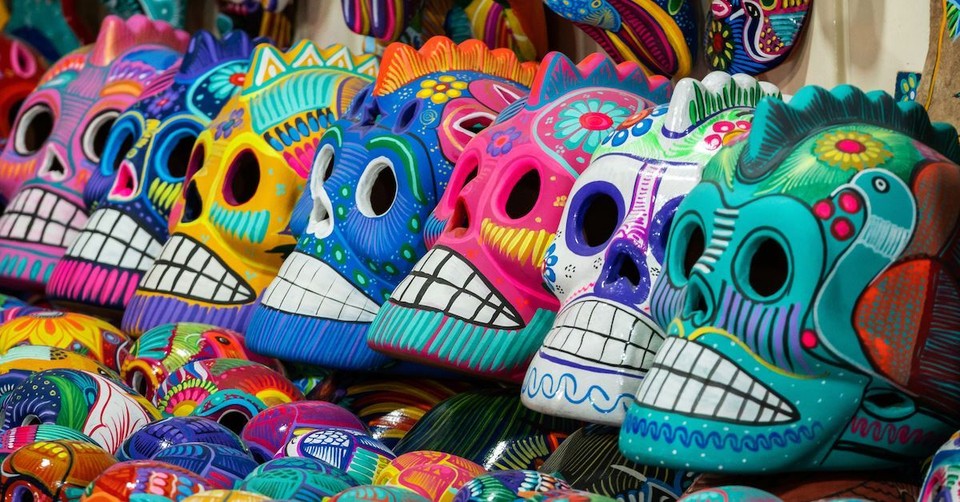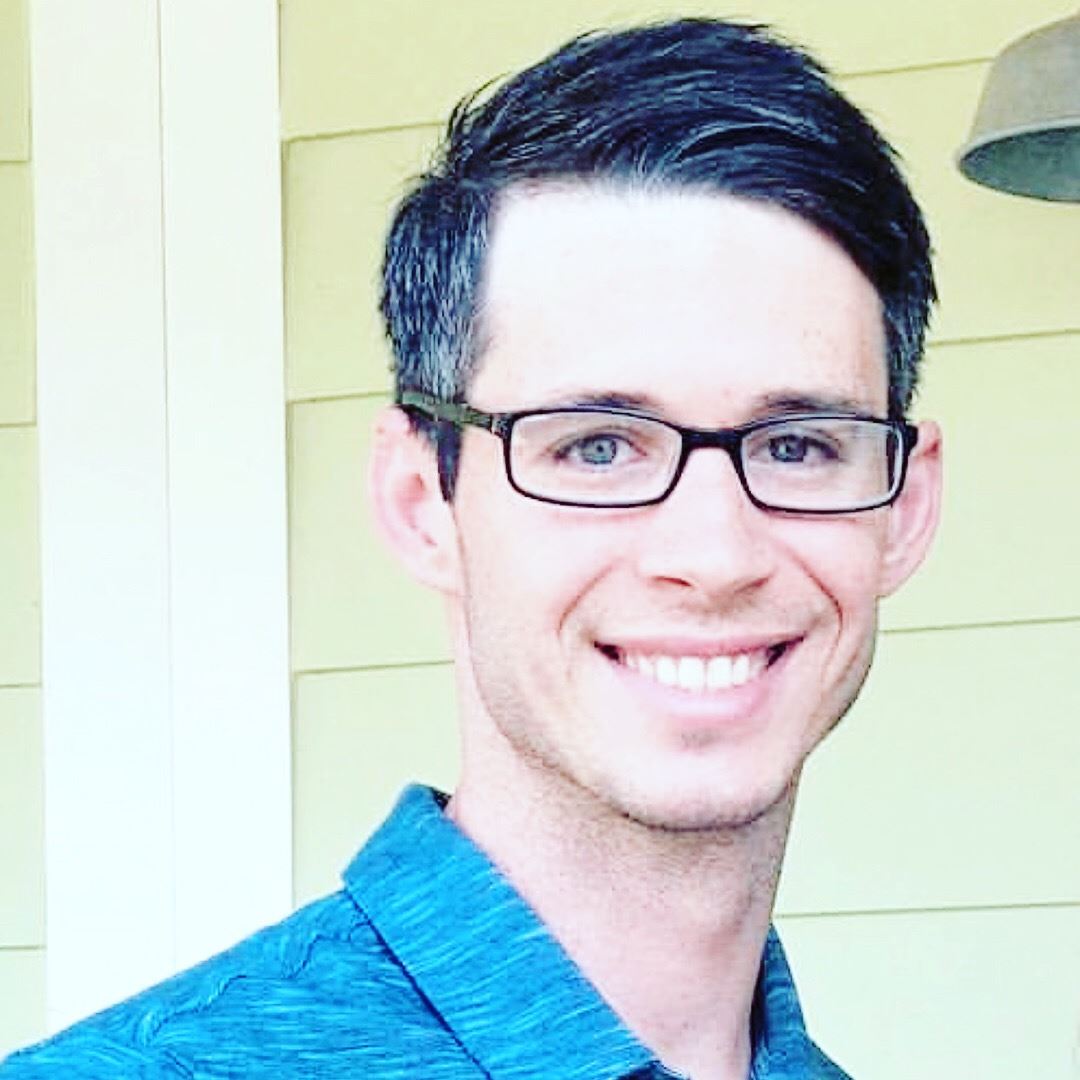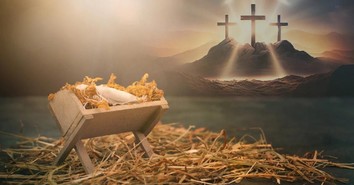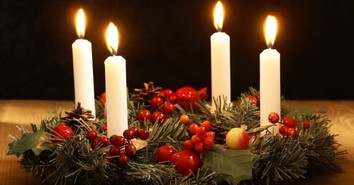What Is the Origin and History of the Day of the Dead?

The Day of the Dead is not synonymous with Halloween, though it does shortly follow All Hallows' Eve. It is sometimes referred to as "the Days of the Dead" because the celebration starts on October 31st, which is All Hallows' Eve through November 2nd. November 1st is "el Día de los Innocents" (the day of the children) or All Saints' Day, and November 2nd is "el Día de los Muertos" (the Day of the Dead) or All Souls' Day.
What Is the Day of the Dead?
The celebration of the Day of the Dead, or Día de los Muertos, differs from Halloween in the intent of the gathering. Halloween is more like I described in the introduction, focusing on horror and thrills, or candy, while the Day of the Dead is a celebration in memory of those in the area that have passed away or family members that have passed away. During the Day of the Dead celebration, it is believed that the boundary between the spiritual world and ours disolves to allow those who were lost to “return to Earth” temporarily for a short time of remembrance.
Though these holidays are very different, they are similar in the sense of costumes, and like Halloween, the Day of the Dead is also a very social event, often spilling out into the streets from venues, like a true festival. There are noisemakers, bright flowers and colors, vivid art-like costumes, largely featuring skeletons. El Día de los Muertos is a Mexican National Holiday, particularly celebrated in the Central and South regions. It isn’t just limited to Mexico, though. It is also celebrated in other counties like Guatemala, Brazil, and Spain. If you were ever curious why Mexican traditions and art feature skeletons or skulls, this is a big influence of that.
There is even a familiy friendly, Pixar movie depicting the celebration of the Day of the Dead called Coco.
The Origin of El Día de Los Muertos
According to National Geographic, the Day of the Dead originated several thousand years ago with the Nahua people, which are a group of indigenous people of Mexico and El Salvador. This group included the Aztec and Toltec people. They believed that mourning the dead was disrespectful, as they saw death a natural part of life. They saw the dead as still part of the communities in memory and spirit.The dayofthedead.holiday explains,
"Día de Muertos came to be from a mixture of the Aztec festival dedicated to the goddess, Mictecacihuatl, with the Catholic influence. Mictecacihuatl is the “lady of the dead” and it is said that she watches over the bones of the dead and swallows the stars during the day.
The church rejected the Aztec’s beliefs and turned it into All Saints' Day and All Souls' Day making it on 2 days to fall into the catholic calendar. Mexicans have since transformed it into a truly unique holiday that they honor every year."
History.com further explains that after a person died, they were believed to travel to Chicunamictlán (the Land of the Dead). The deceased one's soul would have to get through nine challenges, usually a journey of several years, before they could reach their the final resting place, Mictlán. Aztec Nahua families used to put food, water, and tools by the graves to aid their loved ones in this difficult journey. This practice inspired a contemporary version of the Day of the Day. Medieval Spain had a similar practice as well, for illuminating the path for those deceased to return to their earthly homes.
It also sounds slightly reminicent of Catholicism's belief in purgatory, and decades before, the practice of indulgences to get loved ones to heaven faster.
4 Facts about the Day of the Dead
Altars or ofrendas are one of the main features of this holiday. These altars are built in private homes or cemeteries, and unlike traditional Christian altars that are a place of worship, the intention of these altars are to be a place to welcome the spirits back to life. You would often see frames with photos, handwritten messages, and bright flowers as a welcome sign at these altars.
Calavera literally means “skull,” but in the 18th and 19th centuries, this term was used to describe short, funny poems about the living. They are intended to be light, humorous writings to personify the dead during the festival. For example, this one reads:
Estaba la maestra Marta fumándose un cigarillo
llegó la muerte y le dijo te acompaño con el humillo
pues yo ya no puedo fumar y si sigue así
le pasará lo mismo que a mí.Teacher Marta was smoking a cigarette
Death came along and told her I will accompany you
for I can no longer smoke and if you keep up like this
the same thing will happen to you
Catrina refers to “the rich” and you will see many people with skeleton costumes and make-up. It originated from artist Diego Rivera in 1947 in a mural called “Dream of a Sunday Afternoon in Alameda Park.” This really became the symbol of the holiday for those that celebrate it.
Marigolds are used often in the celebration, as their intense color and smell is thought to guide the dead back.
What Does the Bible Say about This Type of Celebration?
We read in Matthew 5:4, “Blessed are those who mourn, for they shall be comforted.” God is a comforter and when we are brokenhearted or hurting for those we love, he surrounds us with comfort. If I put myself in the position of those who practice this cultural tradition, I would certainly find comfort in remembering those that I loved. However, mourning and ushering the spirit of the dead back to life are two separate things.
In Revelation 21:4, we read, “He will wipe away every tear from their eyes, and death shall be no more, neither shall there be mourning, nor crying, nor pain anymore, for the former things have passed away.” We will experience this peace in God’s presence one day. The Day of the Dead is not supported by biblical Christian principles. Hebrews 9:27 says, “Just as people are destined to die once, and after that to face judgment.” Christian principles do not support the authority to summon spirits, but Christians can pray and commune with the Holy Spirit, who is the Spirit of God (Ecclesiastes 12:7).
How Should Christians View Other Christians Who Celebrate This Day?
Above all, Christians should understand that those who celebrate this holiday are seeking to reflect and remember those whom they have lost. If we have Christian friends who have accepted Christ as their Savior but still celebrate this holiday, I do believe that we have a great opportunity to connect with them on what they are truly seeking out of the celebration. That is, to know that their family members, loved ones, friends, and so on are at peace.
Considering the Scripture above (Ecclesiastes 12:7), we can remind them that the spirits of deceased Christians remain with God in an amazing celebration of life far greater than anything we can celebrate on earth. It is a lasting peace that we can hope in and look forward to. Those who have lost loved ones should still think of them, still visit memories of them, but rest knowing that they are well cared for in the presence of the Lord and that their lives were and are deeply meaningful according to God's purpose.
Sources:
Online.nationalhispaniccenter.org

Photo credit: ©GettyImages/R.M. Nunes
Originally published October 30, 2019.







